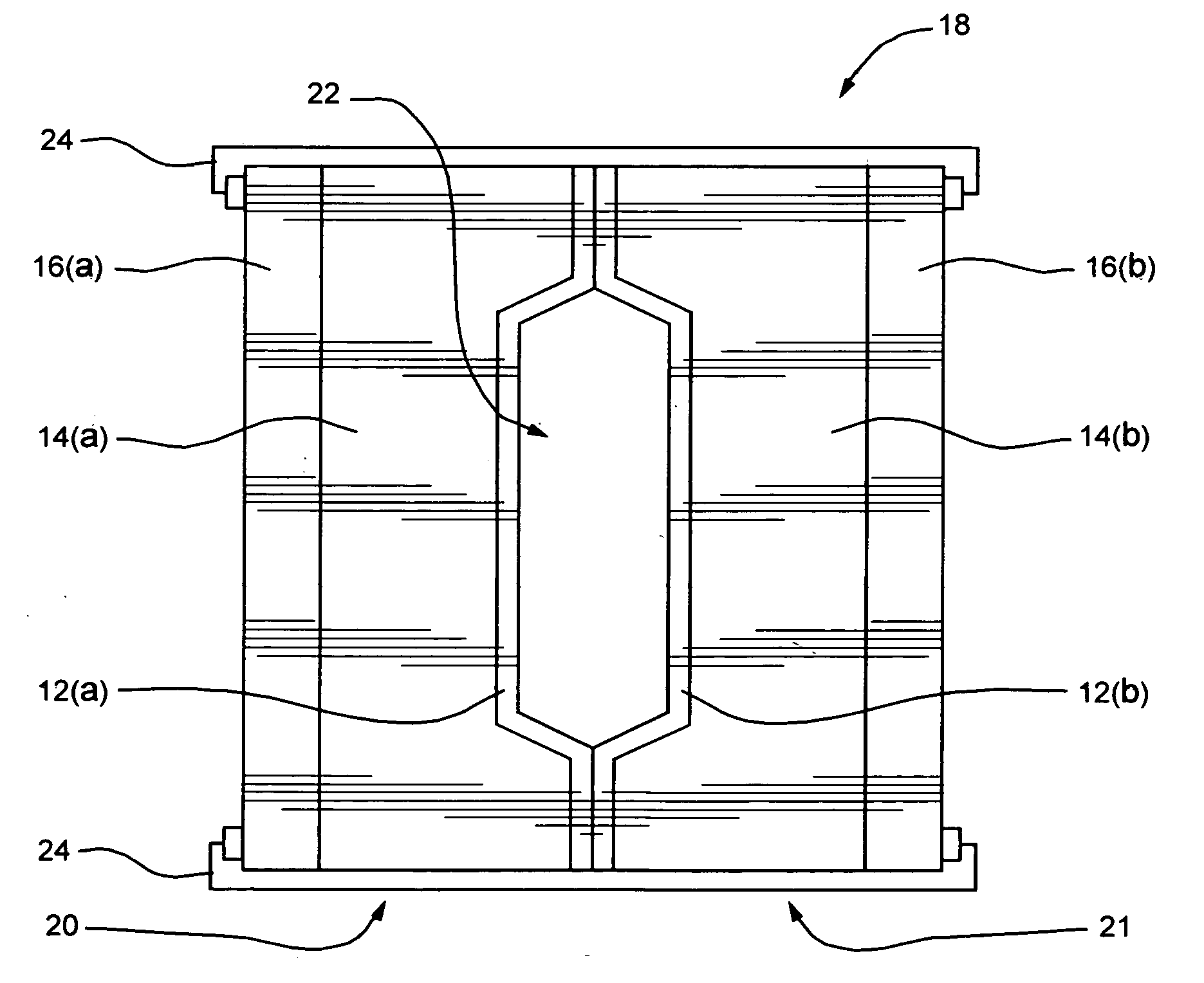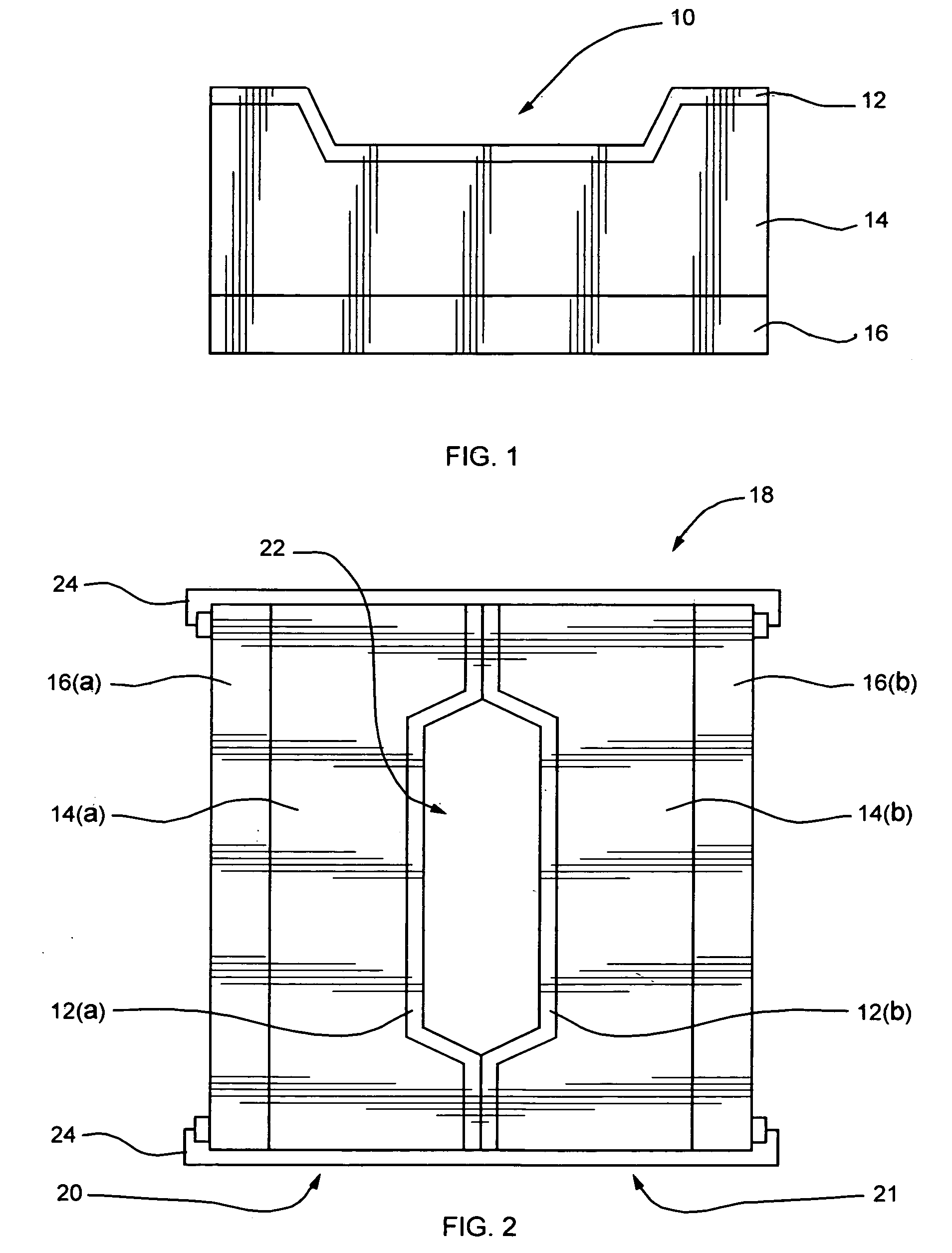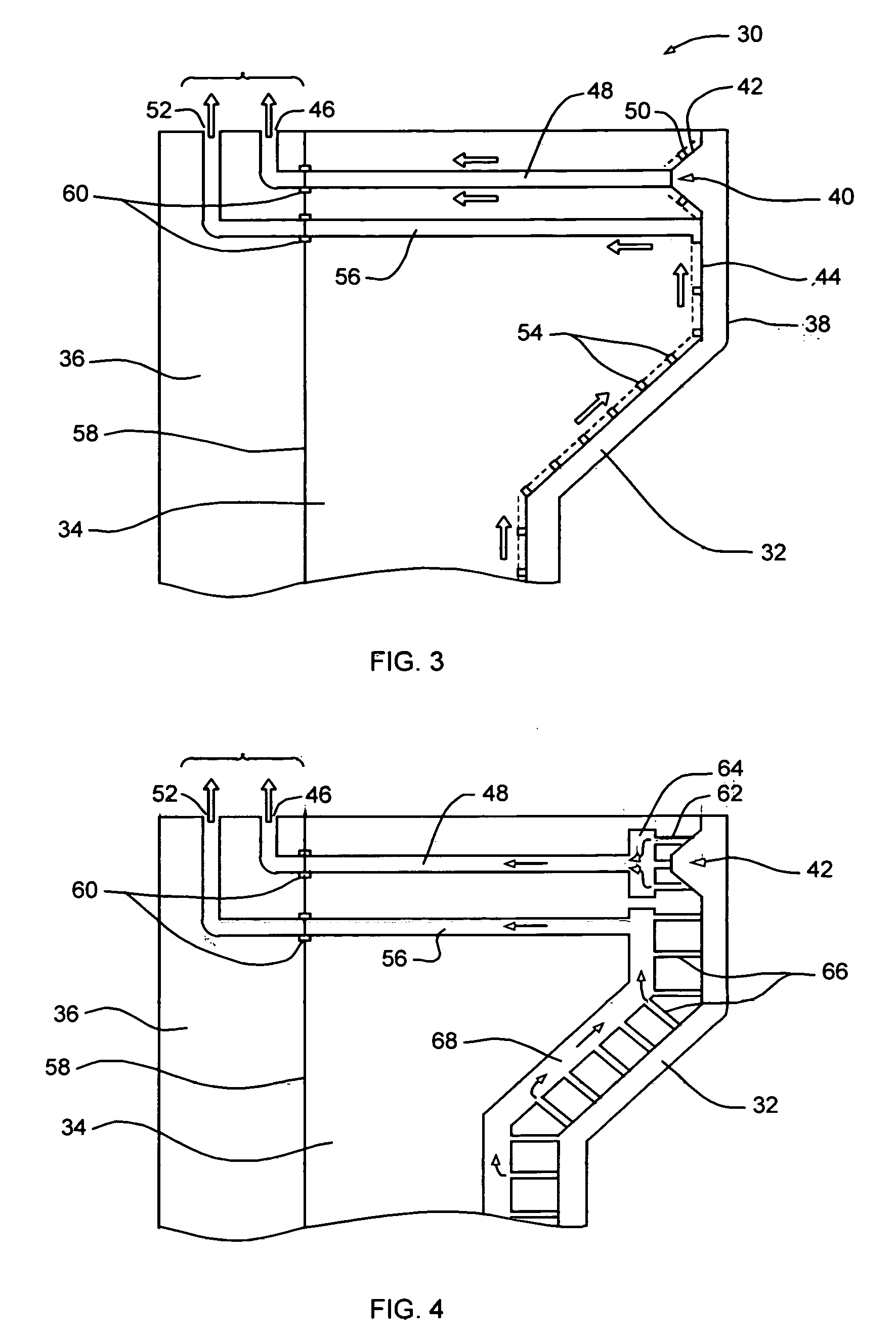Compound tooling system for molding applications
- Summary
- Abstract
- Description
- Claims
- Application Information
AI Technical Summary
Benefits of technology
Problems solved by technology
Method used
Image
Examples
Embodiment Construction
[0045] In a tooling system according to the invention, the standard mold unit, or mold half in the case of matched molds, consists of a three-piece compound mold, the backing-plate, the backing-mold and the skin-mold.
[0046] The backing-plate is preferably one of a standard menu of backing-plates of various sizes and shapes suited to various sizes and shapes of molds depending on the general size and geometry of the part to be molded and carries standard features such as mold clamping systems, process connections, and the like. The backing-plate is designed to be rigid enough to withstand all molding and clamping pressures etc., its design also including whatever is required to integrate the mold into the molding process used, except actual cavity filling systems.
[0047] The backing-mold is a conforming section which mates with the backing-plate according to a standard system of guide pins or keys and is mechanically attached by any suitable means. The backing-mold may be solid, syn...
PUM
| Property | Measurement | Unit |
|---|---|---|
| Pressure | aaaaa | aaaaa |
| Length | aaaaa | aaaaa |
| Volume | aaaaa | aaaaa |
Abstract
Description
Claims
Application Information
 Login to View More
Login to View More - R&D
- Intellectual Property
- Life Sciences
- Materials
- Tech Scout
- Unparalleled Data Quality
- Higher Quality Content
- 60% Fewer Hallucinations
Browse by: Latest US Patents, China's latest patents, Technical Efficacy Thesaurus, Application Domain, Technology Topic, Popular Technical Reports.
© 2025 PatSnap. All rights reserved.Legal|Privacy policy|Modern Slavery Act Transparency Statement|Sitemap|About US| Contact US: help@patsnap.com



